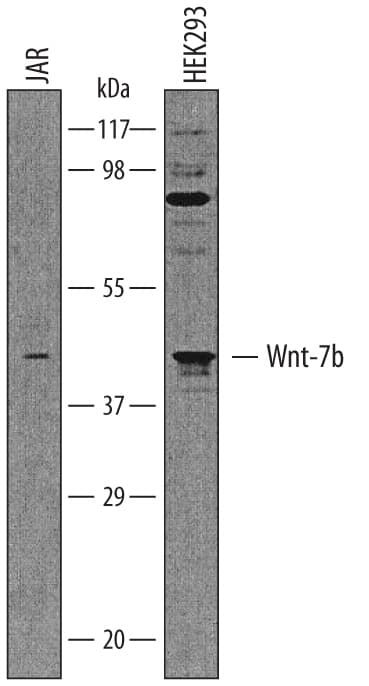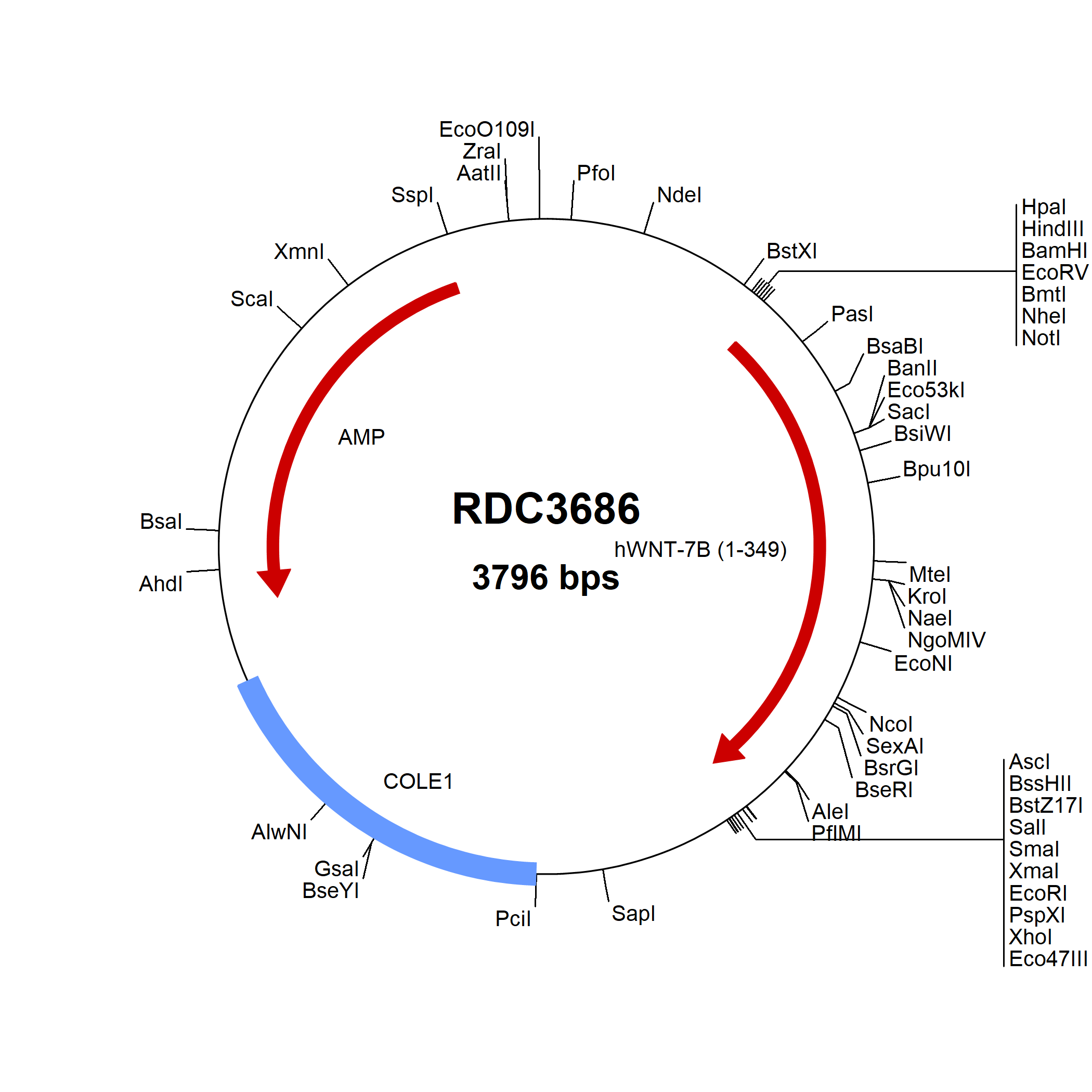Wnt-7b Products
Wnt-7b is a secreted, glycosylated member of the Wnt family of developmental proteins. It is considered a class 3 Wnt based on its inability to transform C57MG cells. Wnt-7b is produced by mammary duct epithelium. A role for Wnt-7b has been suggested in cartilage destruction during osteoarthritis. Wnt-7b signaling may also impact the development...
10 results for "Wnt-7b" in Products
10 results for "Wnt-7b" in Products
Wnt-7b Products
Wnt-7b is a secreted, glycosylated member of the Wnt family of developmental proteins. It is considered a class 3 Wnt based on its inability to transform C57MG cells. Wnt-7b is produced by mammary duct epithelium. A role for Wnt-7b has been suggested in cartilage destruction during osteoarthritis. Wnt-7b signaling may also impact the development...
| Reactivity: | Human |
| Details: | Goat IgG Polyclonal |
| Applications: | WB, IHC |
| Reactivity: | Human |
| Details: | Goat IgG Polyclonal |
| Applications: | WB, IHC |
| Reactivity: | Human, Mouse |
| Details: | Rabbit IgG Polyclonal |
| Applications: | IHC, WB, ICC/IF |
| Applications: | WB, ELISA, Func, MA, AP, +1 More |
| Reactivity: | Human, Mouse |
| Details: | Mouse IgG Polyclonal |
| Applications: | WB, Func |
| Reactivity: | Human |
| Details: | Rabbit IgG Polyclonal |
| Applications: | WB |
| Reactivity: | Human |
| Details: | Rabbit Polyclonal |
| Applications: | IHC, WB |
| Reactivity: | Human |
| Details: | Mouse IgG1 kappa Monoclonal Clone #C4 |
| Applications: | WB |
| Reactivity: | Human |
| Details: | Mouse IgG1 kappa Monoclonal Clone #C7 |
| Applications: | ELISA |




![Western Blot: Wnt-7b Antibody [NBP1-59564] Western Blot: Wnt-7b Antibody [NBP1-59564]](https://resources.bio-techne.com/images/products/Wnt-7b-Antibody-Western-Blot-NBP1-59564-img0007.jpg)
![SDS-PAGE: Recombinant Human Wnt-7b GST (N-Term) Protein [H00007477-P01] SDS-PAGE: Recombinant Human Wnt-7b GST (N-Term) Protein [H00007477-P01]](https://resources.bio-techne.com/images/products/qc_test-H00007477-P01-1.jpg)
![Western Blot: Wnt-7b Antibody [H00007477-B01P] Western Blot: Wnt-7b Antibody [H00007477-B01P]](https://resources.bio-techne.com/images/products/Wnt-7b-Antibody-Western-Blot-H00007477-B01P-img0003.jpg)

![Western Blot: Wnt-7b AntibodyBSA Free [NBP2-93321] Western Blot: Wnt-7b AntibodyBSA Free [NBP2-93321]](https://resources.bio-techne.com/images/products/Wnt-7b-Antibody-Western-Blot-NBP2-93321-img0001.jpg)
![Immunohistochemistry-Paraffin: Wnt-7b Antibody [NBP3-42012] - Wnt-7b Antibody](https://resources.bio-techne.com/images/products/nbp3-42012_rabbit-wnt-7b-pab-612202421351242.jpg)
![Western Blot: Wnt-7b Antibody (C4) [NBP3-42124] - Wnt-7b Antibody (C4)](https://resources.bio-techne.com/images/products/nbp3-42124_mouse-wnt-7b-mab-c4-6122024205884.jpg)
